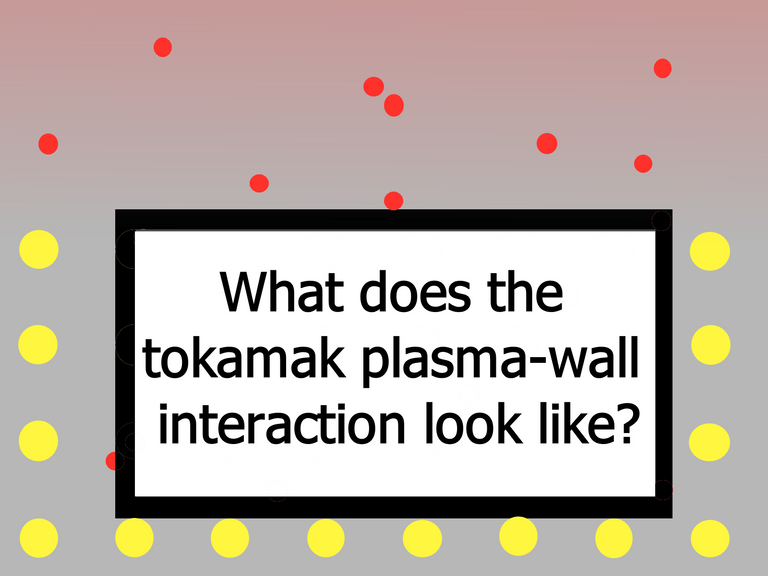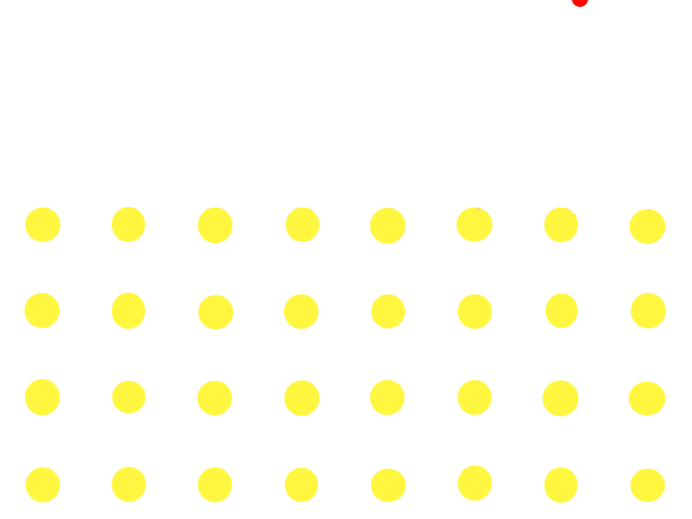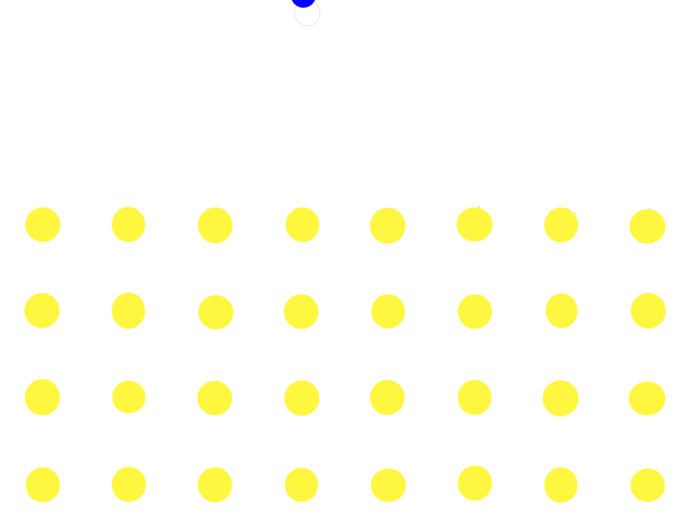
Hello and welcome to the second larger chapter in my Guide to Fusion. I am sorry I havent been posting a lot lately, but I was super busy at work. I was pretty much working from 7 am to 9 pm as I had lots of meetings and conferences so I didnt really find much time to do my beloved animations and make trully quality posts.
But now I should have more free time so I can start where I left of. I left of by describing the different ways of harnessing fusion energy right here on Earth. The content until now can be summed up in a few simple statements.
- Tokamaks are the most efficient way of harnessing fusion energy right now. Stellarators could be the best solution in a few generations.
- One of the most pressing matters that must be adressed is the physics of the plasma-wall interaction.
The whole second chapter of the Guide to Fusion will be focused specifically on this topic. Luckily this is also my field of expertice. Lets begin.
Pure surface processes
All of the processes begin with a particle from the plasma hitting the wall. So we must first discuss how the identity of the particle and its energy affects the dominant processes.

But first we must mention the process that you can see in the gif to the right, as it is possible no matter the energy of the incoming particle or its mass. This is called reflection. Although the process is quite complicated if we try to interpret it physicaly rigourosly we can simplify it by simply making a reflection coefficient R(E, m, θ) which is dependant on the mass of the impinging particle, its energy and its impact angle.
In general terms it can be stated that the reflection coefficient increases with increasing energy, increases with increasing mass. Also it goes to 1 when the impacting angle goes nears π/2.

When a particle recoils from the surface a whole host of other processes can occur with it depending on the identity of the impacting and wall particle. The most important such process is erosion which you can see in the left figure. There are two kinds of erosion. One is called physical sputtering and the second is called chemically assisted physical sputtering.
Both are very similar as they start with an impacting particle transfering a lot of energy to a surface atom. If enough energy is transfered either directly through nuclei-nuclei interaction or with nuclei-electron cloud interaction then the surface atom can be knocked out of its place. This is the case with physical sputtering - it is quite simple. But when the impinging particle can form strong chemical bonds with the wall material like in the case of hydrogen isotopes hitting the carbon limiters (see previous post) then the threshold for physical sputtering decreases and the net erosion is greated than in pure physical sputtering. This is what we call chemically assisted physical sputtering.
Another process is also shown in the previous figure. So-called re-deposition. This is due to atoms that are knocked-out of the wall heating up as they enter the plasma. The heating up makes them lose electrons which makes them ionized and charged. This charge forces them to get caught by the magnetic field which forces them back onto the wall. In the case of W this happens very quickly and very near the erosion zone. This means that the wall has some self-regenerating ability.
In the case of C and they very quickly form hydro-carbons in the plasma because of the high chemical reactivity. This bonds are extremely strong to break which means that the thing that is re-deposited back onto the wall is in fact not pure C but CH complexes. This is called co-deposition and was one of the reasons C is no longer considered as a candidate for a wall material. This co-deposition would drive tritium retention through the roof in a tokamak reactor.
Mixed bulk-surface interaction

Now lets move on to more complex interactions. The first is shown in the left figure. Here a very heavy and energetic ion penetrates directly into the bulk. It transfers a lot of its kinetic energy onto the lattice atoms and knock them out via phonon interactions usually. This leaves a so-called vacancy behind. I will tell you in the future why they are extremely important, so keep them in mind. The lattice atom knocked out now has a lot of kinetic energy and it travels through the material doing additioanl damage to the lattice in so called cascades which are not shown in the gif.

The last process I want to talk about is only really relevant for hydrogen isotopes. Here the hydrogen isotopes become trapped on the surface or in the bulk of the wall material.
If a hydrogen isotope has about 1 eV of energy or larger than it can freely ignore the surface and penetrate into the bulk of the material. There it can diffuse throgh the lattice, but that is a story for a another time.
Another possibility is that the hydrogen isotope has a kinetic energy which is smaller than eV. In that case it reflects from the surface a couple of times interacting with the electron cloud of the material. In this manner it slowly gives away all of its kinetic energy and it becomes trapped on the surface of the material. There it sits for a long time, eventually either escaping into the plasma or into the bulk of the material.
Conclusion
Today we have learned something about the various plasma-wall interaction possible inside a tokamak reactor. With this knowledge we will be able to investigate why some materials are better than others in the next post and later how hydrogen isotopes specifically interact with the wall material, which is one of the biggest things to understand in a fusion reactor.


StemQ Notice: This post was originally submitted on StemQ.io, a Q&A application for STEM subjects powered by the Steem blockchain.
This is a very informative post to understand what happens inside the tokamak plasma chamber. Thank you for your sharing. I have little question here:
Is this self-regenerating ability a wanted thing for us? And can we control it by changing some kind of process parameters? As I understand from the text it is a kind of preventing way against the erosion?! Am I right?
This is definitly wanted. First if the material atoms find themselves in the core plasma they radiate geat through photond ehich means that thr plasma will get cooled.
The second reason is that this just as you have said reduces the overall erosion.
Thank you for the answer. I am going to be following on your new posts about these subjects.
Well I am very glad you like my writing.
Congratulations @maticpecovnik! You have completed the following achievement on the Steem blockchain and have been rewarded with new badge(s) :
Click here to view your Board of Honor
If you no longer want to receive notifications, reply to this comment with the word
STOPDo not miss the last post from @steemitboard:
Great gifs! and great explanation
Why you are in the "plasma mood", what about the cold plasma, we had some fun with that, treating biological stuff (bacteria, plants, seeds, cells...)
Well I am not really that familiar with cold plasma, but I can tell you it is not as cold as you might think.
Yes, it's stove-like hot :D
This post has been voted on by the SteemSTEM curation team and voting trail in collaboration with @utopian-io and @curie.
If you appreciate the work we are doing then consider voting all three projects for witness by selecting stem.witness, utopian-io and curie!
For additional information please join us on the SteemSTEM discord and to get to know the rest of the community!
Congratulations @maticpecovnik! You have completed the following achievement on the Steem blockchain and have been rewarded with new badge(s) :
Click here to view your Board of Honor
If you no longer want to receive notifications, reply to this comment with the word
STOPTo support your work, I also upvoted your post!
Hi, @maticpecovnik!
You just got a 1.52% upvote from SteemPlus!
To get higher upvotes, earn more SteemPlus Points (SPP). On your Steemit wallet, check your SPP balance and click on "How to earn SPP?" to find out all the ways to earn.
If you're not using SteemPlus yet, please check our last posts in here to see the many ways in which SteemPlus can improve your Steem experience on Steemit and Busy.
Hi @maticpecovnik!
Your post was upvoted by @steem-ua, new Steem dApp, using UserAuthority for algorithmic post curation!
Your UA account score is currently 2.903 which ranks you at #11301 across all Steem accounts.
Your rank has improved 371 places in the last three days (old rank 11672).
In our last Algorithmic Curation Round, consisting of 249 contributions, your post is ranked at #46.
Evaluation of your UA score:
Feel free to join our @steem-ua Discord server
Hi @maticpecovnik!
Your post was upvoted by Utopian.io in cooperation with @steemstem - supporting knowledge, innovation and technological advancement on the Steem Blockchain.
Contribute to Open Source with utopian.io
Learn how to contribute on our website and join the new open source economy.
Want to chat? Join the Utopian Community on Discord https://discord.gg/h52nFrV
Congratulations,
you just received a 12.45% upvote from @steemhq - Community Bot!
Wanna join and receive free upvotes yourself?

Vote for
steemhq.witnesson Steemit or directly on SteemConnect and join the Community Witness.This service was brought to you by SteemHQ.com
Congratulations @maticpecovnik! You have completed the following achievement on the Steem blockchain and have been rewarded with new badge(s) :
Click here to view your Board of Honor
If you no longer want to receive notifications, reply to this comment with the word
STOPReally interesting topic @maticpecovnik. This article made me want to read again my old chemistry book to understand the whole information you put in here.
Is it use for an insulation?
Is what used for insulation?
I mean.. the work of the plasma you mentioned above, is that something applied in an insulator ..
Forgive my "stupid" word .. english is not my first language and I didn't use the translation tools.. Now I know that I made a mistake @maticpecovnik. Thank you for your kind respond 😊
I am sorry but I might still not understand your question. I will answer to the best of my ability but if I did in fact misunderstand you please ask again.
The plasma is refered to as the plasma inside a tokamak reactor that will produce energy from fusion reactions. The walls I talk about are the walls of the tokamak reactor which are of course in contact with the plasma inside the tokamak vacuum vessel.
If you want to understand better feel free to read the posts I posted in the Guide to fusion I mention in the post.
Thank you @maticpecovnik.. now I understand a bit, it is not something to cool the reactor.. but the interaction between the plasma and tokamak reactor to producr energy. You really help me to understand it... well, because I'mnot so into science but I like reading something about it.. it make me curious now.
I'll read about the fusion then.. at least I will know about different topic in this world, curiousity won't hurt if it is only for reading, right 😊 this is what I like from steemit, I read and then I can ask the author right away. Thank you for your time to reply my comment too.👋